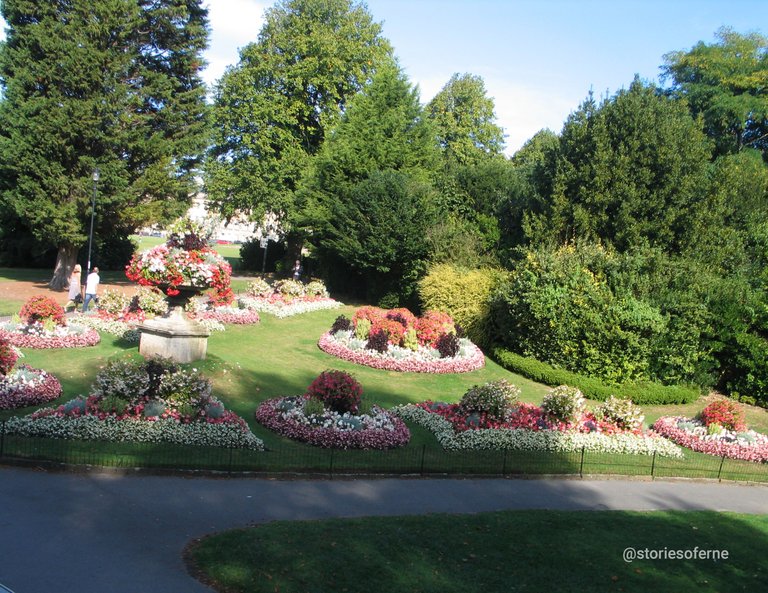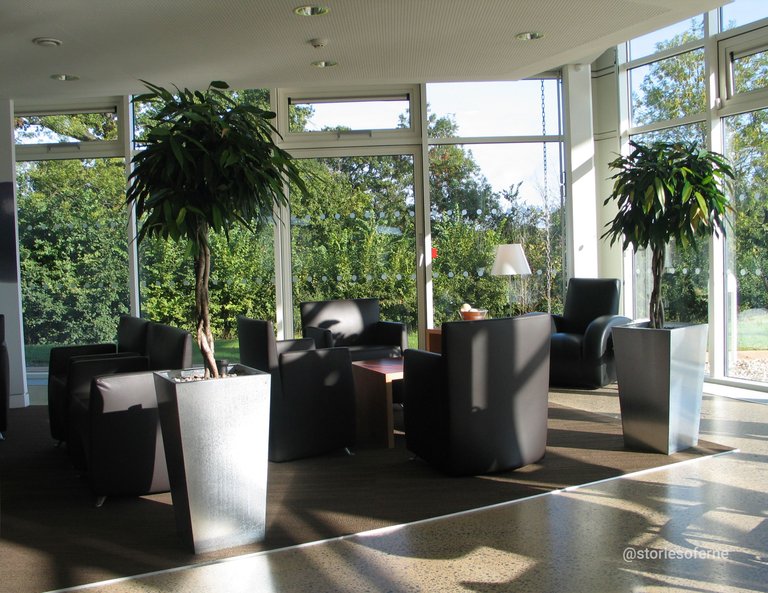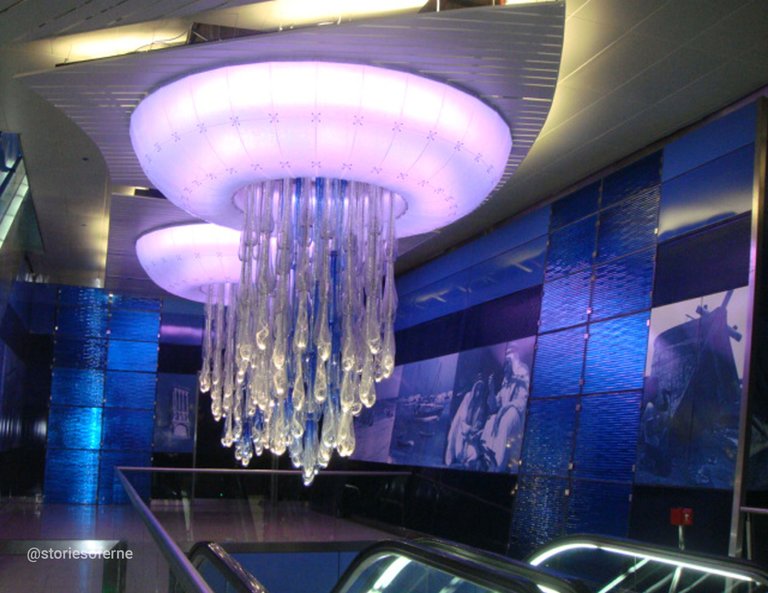
Our Planet's Wellness Crisis
Stress. Depression. Anxiety. Sleep Disorder. Heart Disease. Weight Gain. Poor Performance. These are simply some of the global health issues that the World Health Organization has enumerated as a result of unfavorable conditions in both existing and proposed built environments.
Our inclination towards nature as human beings have been embedded in our genetic profiles since life began sprouting during the evolution of the universe. To illustrate, people are often perplexed on why patients in hospitals who are exposed to sceneries of nature heal more quickly than others. Or why do travelers prefer accommodations that are equipped with majestic window views of the ocean, mountains, or gardens? Or why we have the tendency to be attracted to our natural surroundings during times of unmotivated moods? The enormous benefits of nature and what it can offer to humanity merely outweigh the disadvantages.

However, due to mankind's negligence, carelessness, and recklessness, our planet has deteriorated over time - directly impacting both natural and man-made habitats in the long run. There is a fatally increasing disconnect between people and the natural world. Hence, something needs to be done, and fast!

Architects and designers around the world have been scrambling for effective solutions to heal our natural resources thereby also positively influencing its inhabitants in terms of overall health, well-being, and productivity. Moreover, sustainability or commonly known as green architecture has become a popular practice in the development and design of more efficient, cleaner, and eco-friendly buildings since the critical dilemma of climate change had begun plaguing us.

Of all these revolutionary movements, one field of architectural science has definitely proven itself to be an effective antidote for our planet's health crisis. Introducing: Biophilic Design.
What is Biophilic Design?
This is unfamiliar terminology, especially for individuals who care less about nature and are not mindful of their natural environments. On the other hand, Biophilic Design is in a constant search for various ways to connect our built spaces to nature. Derived from the term Biophilia which means love of nature, human beings have been wired to their natural surroundings since birth.

Considered as one of the most influential pioneers of this industry, Stephen R. Kellert, a highly respected professor of social ecology at the Yale School of Forestry & Environmental Studies (F&ES) currently renamed to the Yale School of the Environment in the United States, clearly defined:
Biophilic Design is a concept used within the building industry to increase occupant connectivity to the natural environment through the use of direct nature, indirect nature, and space and place conditions.
Stephen R. Kellert
It is regarded as the missing link that completes our continuous drive for sustainable development in our physical surroundings. Implemented for homes, buildings, and on larger scales such as city-wide coverage and urban master plans, it is reasoned that this design niche has healthy, environmental, and economical value for occupants of constructed spaces and urban areas.

Although the name Biophilia and Biophilic Design have been invented in recent years, this proven technology had its roots as ancient as the Hanging Gardens of Babylon where its beneficial healing outcomes have been experienced.
What is NOT Biophilic Design?
If the principles of architecture and design do NOT emphasize the elements of the natural environment that offer value to human health, lifestyle, and productiveness in our continuous quest for survival and growth, it is not biophilic.

The following are some vital indicators and distinctive characteristics that show non-biophilic versus biophilic processes in our built worlds:
Natural environments that do not improve mankind's health, well-being, and productivity are not considered effective factors for the process to have merit.
If human exposures to nature only occur occasionally and are seldom present in experiences, it is not biophilic. There must be a repeated and continuous connection to nature for positive results to happen.
There must be a holistic bridge between built spaces and the natural surroundings to create a truly integrated biophilic environment. If the proposed areas are isolated, disconnected, and away from the overall contextual setting, then it is not biophilic.
Emotional human attraction and feelings of connectedness to the natural habitats and built spaces must be clearly evident for biophilic design to be effective.
Biophilic design must motivate a sense of community with the social interaction of meaningful relationships caused by natural environments. Without the sense of belonging, there is no impact thus is not biophilic.
In today's modern habitats where we spend a large majority of our lives indoors, and due to the increasing use of electronic gadgets like smartphones and game consoles, plus the addictive activities caused by the Internet, Biophilic Design and its healing processes have been greatly challenged on a daily basis.

Therefore, to combat these critical issues, 3 effective principles and practical applications have been outlined in the paragraphs below to ensure healthier spaces and more productive built environments.
1. Direct Exposure to Natural Environments
This principle of Biophilic Design points to our authentic interaction with different environmental characteristics that are evidently present in our surroundings.
ELEMENTS OF NATURE. Natural components like water, fire, air, light, plants, and animals have a profound effect on people's well-being. These natural elements with their diverse mix of various life-forms, contribute to the bigger scope of ecological processes that occur within our planetary habitats. Moreover, direct exposure to these natural objects has been proven to strengthen people's innate connection to nature.

NATURAL SCENERIES & ECOSYSTEMS. Exposure to this interconnected network of plants, animals, rocks, soil, water, and geological processes is vital for human evolution. The direct experience of these sustainable environments is absolutely refreshing and welcoming. Due to their richness in biological diversity, design strategies would include the construction of aquatic areas such as wetlands, forest regions, green roofs, and other sustainable natural systems.

WEATHER PATTERNS. People's responses to climatic changes have been imminent since time immemorial. The interesting relationship between the built environments and their immediate surroundings has direct consequences on the experiences of the occupants of spaces. Strategies in architecture and design include full-height windows, outdoor terraces, and cantilevered platforms like balconies, patios, gardens, and many more.
2. Indirect Exposure to Natural Environments
This principle of Biophilic Design is based on the visual and other sensual representations of nature such as photographs of natural scenes, paintings depicting natural forms, textiles and fabrics, wood and other natural materials, plus distinctive furniture that evoke our emotional connections with nature.





Other ideal examples of these represented natural elements include graphical images, pictures, natural colors and materials, natural patterns, forms, shapes, and geometries of certain architectural details, Biomimicry, and other relevant transformations of nature from its original states.
3. Human Experiences in Built Environments
This principle of Biophilic Design refers to a built environment's spatial features and characteristics that influence the experiences of its human occupants.







Some of the most important experiential factors involved in this connection between people and nature include welcome, promenade and spatial transitions, panoramas and vistas, prospect and refuge, and other significant experiences that are caused by the interaction between humans and nature.
Mother Nature: The Key to Well-being
Nature definitely heals. No doubt about that. A conducive habitat that is fit for the continuous evolution of its occupants must be healthy and productive places where people can operate to their maximum potential.


The healing connection between these natural and constructed ecosystems must be sufficient for mutual relationships to thrive and benefit the greater whole than the compilation of its individual parts. In other words, these human and natural links must contribute to the effective coherence of the entire environment.


The numerous benefits of Mother Nature being embedded in Biophilic Design definitely promote and boost positive results in people as long as the vital connection to the natural world are strongly developed in the various habitats and built environments that surround their world every day. It is the consistent maintenance of our quality relationships with our natural world that would sustain humanity and our precious planet for eons ahead.
Biophilic Design is indeed a potent remedy to transform unhealthy spaces into vibrant spatial atmospheres and physical environments that truly enhance our health, well-being, and productivity.
#Hive, how has nature influenced your health and well-being within a built space?
